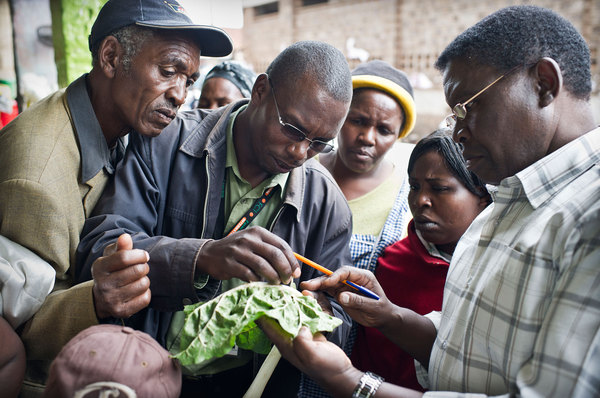Update: New Pest & Disease Records (13 October 18)
We’ve selected a few of the latest new geographic, host and species records for plant pests and diseases from CAB Abstracts. Records this fortnight include the first report of sweet potato Badnavirus in South Africa. The first report of Arabis mosaic virus in rhubarb in Poland and the first report of maize yellow mosaic virus…
Update: New Pest & Disease Records (07 September 18)
We’ve selected a few of the latest new geographic, host and species records for plant pests and diseases from CAB Abstracts. Records this fortnight include the first report of Croicidolomia binotalis as a serious pest of Brassica vegetables in Kashmir, India; a new species of Anagyrus from China and a new species of Colletotrichum causing…
New study shows that bacteria can be engineered to create their own fertilizer using air
Researchers have successfully engineered bacteria to use nitrogen at night to create chlorophyll for photosynthesis. This new development could reduce the need for human-made fertilizers on agricultural crops, thus reducing the cost and manpower required for fertilizer application.
Update: New Pest & Disease Records (07 August 18)
We’ve selected a few of the latest new geographic, host and species records for plant pests and diseases from CAB Abstracts. Records this fortnight include the first report of avocado sunblotch viroid (ASBVd) naturally infecting avocado in Greece, the first report of Dasheen mosaic virus infecting taro in Ethiopia and the first record of Cryptochetidae…
Update: New Pest & Disease Records (19 July 18)
We’ve selected a few of the latest new geographic, host and species records for plant pests and diseases from CAB Abstracts. Records this fortnight include the first report of thrips from India, the description of a new species of PolycestaDejean from Chile and a report on the causal agent of leaf blight on sunflower in…
Environmentally Friendly Insect Repellent for Agriculture
A team of researchers from the Technical University of Munich (TUM) have developed a biodegradable agent that repels insect pest activity amongst crops without the use of insecticide chemicals.
Update: New Pest & Disease Records (08 June 18)
We’ve selected a few of the latest new geographic, host and species records for plant pests and diseases from CAB Abstracts. Records this fortnight include the first report of Melon necrotic spot virus in Brazil, the first report of chrysanthemum stem blight and dieback (caused by Tomato spotted wilt virus) in China and the first…
Update: New Pest & Disease Records (16 May 18)
We’ve selected a few of the latest new geographic, host and species records for plant pests and diseases from CAB Abstracts. Records this fortnight include the first report of plum pox virus (PPV) in Japan, the first report of white blister rust disease caused by Albugo occidentalis on spinach in Turkey and the first report…
EU ban on bee-killing insecticides
The world’s most widely used group of insecticides will be banned from all fields within the next six months by the European Union. The use of neonicotinoids will be prevented in any manner with the aim of protecting important insect pollinators such as honeybees which are known to be vital for global crop pollination.
Nuclear Development in Zambia: A Positive for Environmental Protection?
The agriculture sector in Zambia employs around half of the country’s labour force and provides the largest source of employment opportunities for rural women. However, although the sector contributes 6.5% GDP and 9.6% of the national export earnings, the industry is one of the most under-developed in the country.



